Irish Grand National & Fairyhouse Easter Festival Betting Offers 2025
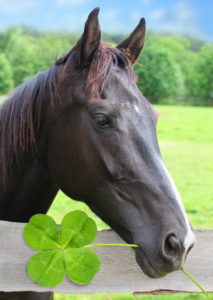 There is no fixed date for the Irish Grand National as it is always run on Easter Monday and therefore moves each year with Easter weekend. The famous race, established in 1870, is a crown jewel of Irish racing and is the feature event of the Fairyhouse Easter Festival, which features 23 races from Easter Saturday to Monday. This includes 14 class one races such as the Gold Cup and the Mares Novice Hurdle Championship Final.
There is no fixed date for the Irish Grand National as it is always run on Easter Monday and therefore moves each year with Easter weekend. The famous race, established in 1870, is a crown jewel of Irish racing and is the feature event of the Fairyhouse Easter Festival, which features 23 races from Easter Saturday to Monday. This includes 14 class one races such as the Gold Cup and the Mares Novice Hurdle Championship Final.
The Irish National is for 5 year-old or older horses and is raced just over three and a half miles, it requires 24 fences to be jumped with the winner taking home over €270k from a €450k+ prize pool.
Coming at the end of the jump racing season and in the same month as the Aintree Grand National this means online bookmakers have some quality offers to welcome new customers and to reward existing punters. Below, as you’ve come to expect from us, we’ve found all the best deals around with details of how to claim them. Further down this page find race cards and information for all Easter Festival races as well as history and details about the course.
Irish Grand National Betting Offers for 2025
This event has not started yet, please check back nearer the time. For other offers see our main loyalty page.
Fairyhouse Easter Festival 2025 Race Cards
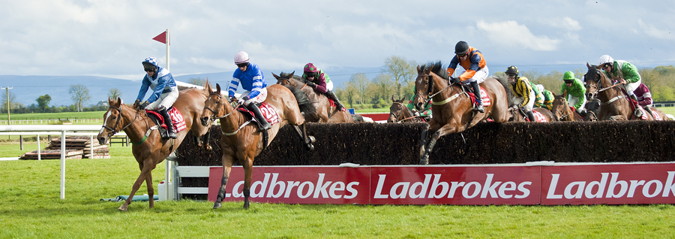
To those that know the industry, horse racing is as closely linked to Ireland as shamrocks, Guinness and other emerald isle-themed cliches. Read about the Cheltenham Festival and you’re as likely to learn about the so-called ‘Irish invasion’ as you are the Gold Cup. Given that Wales and Scotland both have their own versions of the classic race that takes place at Aintree Racecourse every year, it’s no massive surprise, therefore, that the Irish have their own Grand National to celebrate.
As with the English and Scottish Nationals, it is scheduled to take place in April every year. It is only the Welsh Grand National that doesn’t fit in with the rest, occurring as that does during December or January depending on the weather.
Whilst the Irish Grand National is unquestionably the most exciting race of Easter weekend, as you can see from the race cards below it isn’t the only decent racing that takes place at a time when most people are busy stuffing their face with chocolate. The Fairyhouse Easter Festival is arguably the most exciting weekend of Irish racing, getting underway on Easter Saturday and running through until the Monday. All three days fit very much into the ‘not-to-be-missed’ category for lovers of horse racing in Ireland and the rest of the UK.
Here is a look at the race schedule over the three Easter days that contains no less than 12 graded races to enjoy.
Opening Day – Saturday 19th April 2025
| Time | Race | Grade | Fences/Hurdles | Distance |
|---|---|---|---|---|
| 2:10 | Maiden Hurdle | – | 10 | 2m 3f 165y |
| 2:45 | Hunters Chase | – | 18 | 3m 1f 55y |
| 3:20 | Mares’ Novice Chase | Listed | 15 | 2m 5f 120y |
| 3:55 | National Handicap Chase | – | 15 | 2m 5f 120y |
| 4:30 | Novice Handicap Hurdle Series Final | Listed | 12 | 2m 7f 165y |
| 5:05 | RYBO Handicap Hurlde | Listed | 9 | 2m |
| 5:40 | Mares Flat Race | Listed | 0 | 2m |
KEY: m – Miles, f – furlong(s), y – yards
Gold Cup Day – Easter Sunday 20th April 2025
| Time | Race | Grade | Fences/Hurdles | Distance |
|---|---|---|---|---|
| 1:25 | Maiden Hurdle | – | 8 | 2m |
| 2:00 | Novice Handicap Hurdle | – | 11 | 2m 4f |
| 2:35 | Mares’ Novices’ Hurdle | Grade 1 | 11 | 2m 4f |
| 3:10 | Festival Novice Hurdle | Grade 2 | 11 | 2m 4f |
| 3:45 | Novice Hurdle | Grade 2 | 8 | 2m |
| 4:20 | Novice Handicap Chase | Listed | 12 | 2m 150y |
| 4:55 | Gold Cup Novice Chase | Grade 1 | 14 | 2m 4f |
| 5:30 | George Mernagh Memorial Sales Bumper | – | 0 | 2m |
KEY: m – Miles, f – furlong(s), y – yards
Grand National Day – Easter Monday 21st April 2025
| Time | Race | Grade | Fences/Hurdles | Distance |
|---|---|---|---|---|
| 2:05 | Novice Handicap Hurdle | – | 8 | 2m |
| 2:40 | Juvenile Hurdle | Grade 2 | 8 | 2m |
| 3:15 | Steel Handicap Hurdle | – | 12 | 2m 6f 45y |
| 3:50 | Rathbarry & Glenview Studs Hurdle | Grade 2 | 10 | 2m 4f 45y |
| 4:20 | Fairyhouse Chase | Grade 2 | 14 | 2m 3f 160y |
| 5:00 | Irish Grand National Chase | Grade 3 |
22 | 3m 5f 24y |
| 5:40 | Handicap Chase | – | 18 | 3m 124y |
| 6:10 | INH Flat Race | – | 0 | 2m |
KEY: m – Miles, f – furlong(s), y – yards
Fairyhouse Easter Festival Feature Races
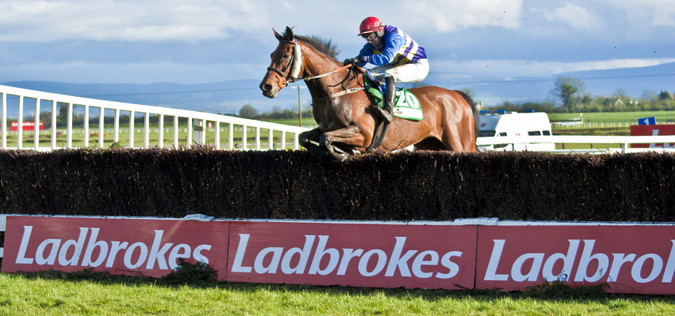
Given there are twenty three races that take place over the weekend we won’t cover them all, but here’s a look at the biggest races you’ll come across whilst you’re waiting for the Grand National to get underway.
The Gold Cup
Any racecourse worth its salt seems to have a Gold Cup nowadays and Fairyhouse is no exception. Run since 1960, the Gold Cup was sponsored by Irish Distillers, who produced Powers Whiskey, and for a time it was known as the Powers Gold Cup. Sponsorship duties are currently in the hands of WillowWarm.
Raced on Easter Sunday, the event lasts for two miles and four furlongs and asks competitors to jump sixteen fences during the course of it. It’s for novice chasers that are five and over, with a weight of eleven stone and six pounds for five-year-olds eleven stone for six-year-olds, whilst mares will be given a seven pounds allowance for mares.
The 2022 winner was Galopin Des Champs, handing Willie Mullins his fourth victory as trainer, in successive years having also won in 2018, 2019 (no race 2020) and 2021. Galopin Des Champs went on to win the Cheltenham Gold Cup for Mullins in 2023 and 2024. Mullins won again in 2023 to make it five in a row with Fame Bearer.
The trainer record is shared with Jim Dreaper who also achieved 5 victories between 1973 and 1994. The most successful jockey in the race is Paul Carberry with four victories. As it’s for novices, no horse has won the race more than once.
Mares Novice Hurdle Championship Final
The Mares Novice Hurdle Championship Final was first run in 1995 and was given Grade 3 status in 2004. Seven years later and it was upgraded to be a Grade 2 offering, then in 2013 it became a Grade 1 race. It is, as the name suggests, a hurdle race for novice mares and takes place over a distance of two miles and four furlongs. There are twelve hurdles over the duration of the event, which is open to mares aged four and up. In 2024 the winner took home €59,000.
As it’s a race for novices, no horse has won it more than once. The most successful jockey to date is Paul Townsend, who has won the race five times, including three back-to-back wins in 2022, 2023 and 2024. Second on that list is Paul Carberry with three wins. Carberry’s first victory came on the back of Bondi Storm in 2001, repeating the trick Asian Maze in 2005 and then completing his hat-trick in 2008 on Oscar Rebel.
Willie Mullins takes the record as the best trainer for the event, notching up eight wins. His first came in 2003 thanks to Nobody Told me, then he managed back-to-back winners in 2013 and 2014 and then again in 2017 and 2018. He won again with Brandy Love in 2022, Ashroe Diamond in 2023 and Jade De Grugy in 2024 – all were ridden by Paul Townend who was on the back of Mullins horses for all five of his wins.
In 2019 Rachel Blackmore rode home on the favourite, Honeysuckle, trained by Henry De Bromhead. Two years later she rode that horse to victory in the Champion Hurdle at Cheltenham, becoming the first woman to do so. Honeysuckle and Blackmore also won the Champion Hurdle the year after too.
Festival Novice Hurdle
Continuing the day of races for novices is the Festival Novice Hurdle, which is for horses aged four and over. It’s run over two miles and four furlongs and was awarded Grade 2 status in 2004. The race was inaugurated in 1992 and, because it’s another one for novices, no horse has been victorious more than once.
The same cannot be said for the jockeys that have taken part in the event over the years. Charlie Swan and Ruby Walsh have both won it three times, but the leading jockey is Paul Carberry who has picked up four victories. He won back-to-back races in 1999 and 2000 before skipping a year and winning it again in 2002. His fourth win came on Aitmatov in 2007.
In terms of trainers, Dessie Hughes, Jessica Harrington and Philip Fenton have each won the race twice, but the trainer of the horses that Paul Carberry rode to victory beats them all thanks to those four wins. Even so it is Willie Mullins, who else, that claims the crown with eight wins to date since 2004, including three back-to-back between 2022 and 2024.
Rathbarry & Glenview Studs Hurdle
Open to horses aged five and over, this Grade 2 race takes place over two miles and four furlongs and is one of the younger races of the weekend, having only been introduced in 2011.
That hasn’t stopped Willie Mullins laying down his claim as the champion trainer of it, however, given that he’s won it on five occasions to date. The first came in 2014, then he did it again in 2017, 2018, 2021 and 2023.
Tony McCoy has won the event twice, picking up consecutive wins in 2012 and 2013 on Get Me Out Of Here and then Dressedtothenines. Paul Townend has the record, though, with three wins to date in 2014, 2018 and 2023. The race features ten hurdles.
Paddy Kehoe Suspended Ceilings Novice Hurdle
Raced over two miles, the Paddy Kehoe Suspended Ceilings Novice Hurdle has had numerous names since it was first run. In the 1990s, for example, it was the Jameson Gold Cup (Novice) Hurdle. Records for the event date back to 1989 and, as with other races on the list, the fact it’s for novices means no horse has been allowed to win it more than once.
It’s been a popular race for jockeys to win more than once, with only 9 winners since 1989 doing so just the once. Ruby Walsh and Tommy Treacy have each won it on three occasions, but it’s Paul Carberry who once again calls the race his own. He’s been the first across the finish line five times, including consecutive wins in 1999 and 2000.
None of Carberry’s wins came on horses trained by Willie Mullins, but it doesn’t matter. The Irish trainer has seen his horses win the race a record eleven times, keeping him well ahead of the next closest in Noel Meade, who won the race five times. In fact, the only trainers other than Mullins to win the race since 2013 was Gordon Elliott in 2016 and Pay Doyle in 2022.
Willie Mullins can also lay claim to being a winning jockey in this race riding Princess Casilla to win in 1993. The race features nine hurdles.
John and Chich Fowler Memorial Mares Chase
This race was first run in 2009 and was dedicated to the memory of John Fowler, an amateur jockey and trainer who died in an accident at Rahinston in 2008. He was the son of Bryan Fowler and the brother of the trainer Jessica Harrington. In 2013 his widow Chich also died and her name was added to the race.
It’s been a Grade 3 (now Premier Handicap) offering since 2012 and is a chase for Mares that runs over two miles and four furlongs. No horse has managed to win it more than once even though it’s for mares aged five and up, with only jockey yet managing to pick up more than one win – that was Bryan Cooper twelve years apart (2012 and 2023).
In fact, Nicky Henderson, Joseph O’Brien and Willie Mullins are the only trainers to have their names attached to a winner on more than one occasion. Henderson picking up consecutive victories in 2013 and 2014, Mullins in 2015 and 2019 and O’Brien in 2017 and 2023. The race is still a Mullins race though, in 2021 the winner was trained by Margret Mullins and ridden by Danny Mullins.
Juvenile Hurdle
A Grade 2 National hunt hurdle for novice juveniles, this race was given Grade 3 status in 2008 and then became a Grade 2 offering in 2016. It has enjoyed numerous sponsors over the years, such as Tayto and then a local property consultant. It takes place over two miles and, because it’s for juvenile novices, no horse has won it more than once.
When it comes to jockeys you’ll be unsurprised that a few of them have been on the back of winners on multiple occasions. Tommy Carmody has won it three times, for example, including back-to-back wins in 1990 and 1991. Davy Russell has ridden three winners to date too. But you won’t be surprised to learn the name of the most successful jockeys of all: Ruby Walsh and Paul Carberry – both have ridden four winners.
All of Carberry’s winners were trained by the most successful trainer to date, Noel Meade with 8 wins to date. Willie Mullins in second spot has five victories.
The Irish Grand National
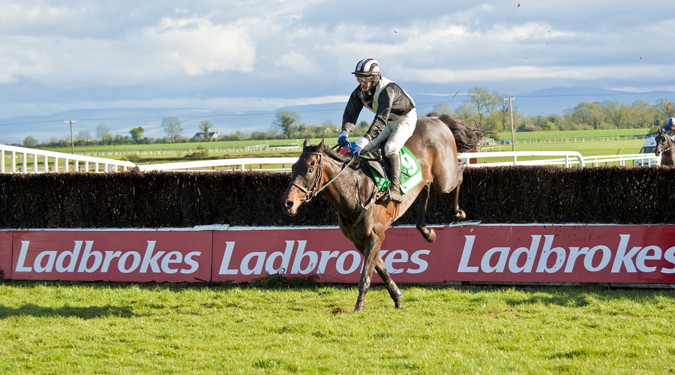
The big race of the weekend is unquestionably the Irish Grand National. We will tell you about its history below, but now it’s time to tell you some information that might help you pick a winner. The race is run over three miles and five furlongs and it’s a handicap offering that is open to five-year-olds and over. It’s run right-handed and in 2023 the purse amounted to €450,000, with the winner claiming €270,000 of that.
There are twenty-two fences that need to be negotiated before a horse can cross the finish line, which is something that Pat Taaffe achieved six times as a jockey. That’s the record and he picked up his first win in 1954 and his final one twelve years later. One of those winners was Arkle, the Irish thoroughbred who won three Cheltenham Gold Cups consecutively from 1964 to 1966. He also won on the back of Flyingbolt, the second-best racehorse of all time behind Arkle.
Arkle and Flyingbolt were both trained by Tom Dreaper, who achieved ten wins between 1942 and 1966, four of which were ridden by Taaffe. Only one owner has won the unique double of the Irish Derby and the Irish Grand National, which was William Brophy in 1880. Several winners have gone on to win the English Grand National, though none have yet done so in the same year. Numbersixvalverde did so in 2005 and then 2006. The race’s most successful horse is Brown Lad, who won it three times.
Surprisingly Willie Mullins won only his first Irish National in 2019, although when he did do it he trained all of the horses in the first three positions. The jockey was of course Ruby Walsh, winning his first National since 2005, he also won it in 2000. He also won in 2023 with I Am Maximus along with Cheltenham Champion Jockey Paul Townend.
There was no race in 2020 with the festival called off due to coronavirus but in 2021 the race was held with no spectators. Whether that helped the winner or not is hard to say but it was certainly an unexpected victor when Freewheelin Dylan, trained by local trainer Dermot McLoughlin, won the race at no less than 150/1. He didn’t just win it he was leading for the whole race. Nothing like a National to throw up some unlikely winners.
Things returned to normal in 2022 but the odds of the winner stayed high as Lord Lariat this time rode home with a 40/1 starting price. The horse was again trained by Dermot McLoughlin, managing his second successive win despite a strong field dominated by Gordon Elliott who entered no less than 10 horses into the race.
History of The Irish Grand National
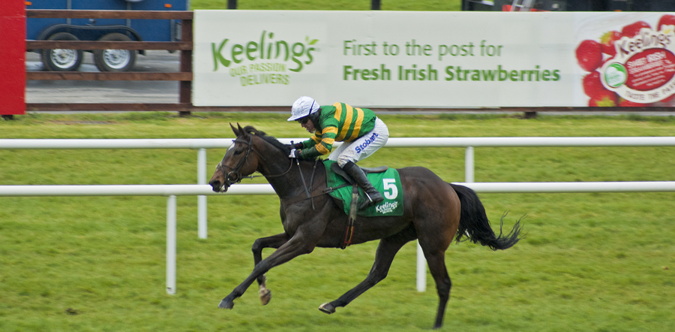
Where else to start but at the very beginning. The race was first run in 1870 at the course that it still calls home, Fairyhouse Racecourse in Ratoath, County Meath. Between its formation and 1882, ten of the winners had been trained at Curragh in County Kildare. Traditionally taking place on Easter Monday, it was a favourite of racing fans from Dublin to such an extent that it was given the nickname ‘The Dubs’ Day Out’.
It was originally three miles and four furlongs in length, only to see an extra furlong added in 1991 and it has remained at that length ever since. The race has enjoyed numerous sponsors over the years, with Irish Distillers taking on the duty under numerous names until 2010. It was briefly taken over by Ladbrokes and then in 2014 the Irish bookmaker Boylesports became the principle sponsor. They appointed Barry Geraghty as an ambassadors for the race, whose job included promoting the event on social media and other channels.
Prior to 2020 the race had been held every year with the exception of 1941 during the second world war. In 2020 the Grand National was abandoned due to the lockdown of sport caused by the spread of the corona virus pandemic. The 2021 version was held with no spectators.
History and About Fairyhouse Racecourse
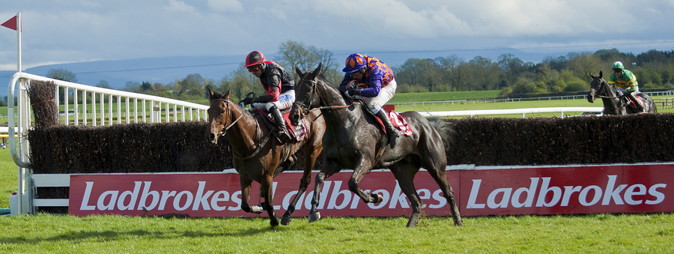
The first ever meeting at Fairyhouse Racecourse was hosted there in 1848, with the Ward Union Hunt’s point-to-point racing being some of the first racing to take place. That has previous been hosted at Ashbourne, but the decision to move to Firehouse came about because members of the hunt had visited Fairyhouse and felt that it had huge potential.
The following twenty years saw numerous different meetings take place at Fairyhouse but nothing to truly capture the Irish racing-going public’s imagination. In 1870, however, the Irish Grand National started taking place at the venue, ultimately being won by a grey gelding by the name of Sir Robert Peel. The prize fund was one hundred and sixty-seven sovereigns.
The race was immediately a popular one, following in the footsteps of the English Grand National, which was first run in 1839, and the Scottish Grand National which had been introduced in 1858. In fact, the Welsh Grand National is the only one that is younger than it, given that that didn’t come into being until 1895.

The National being raced at Fairyhouse saw the racecourse’s reputation improve and it has since gone on to become one of Ireland’s best and most exciting courses. In 1999 it underwent a fairly heft redevelopment, with modern facilities replacing the older ones to bring it as up-to-date as possible.
The course itself is owned and operated by Horse Racing Ireland and has an almost square appearance. It’s a mile and three-quarters long, running right-handed. The end of the course sees the turf descend slightly before an uphill run to the finish line, which has offered some exciting finishes over the years.
There’s also a flat course at Fairyhouse, which is suited to horses that enjoy a gallop. The draw can cause havoc to horses that end up being caught on the inside and stuck on the rail. A quick start can make the difference between victory and being an ‘also ran’, so keep your eye on horses that tend to get off to a flyer.



